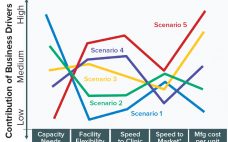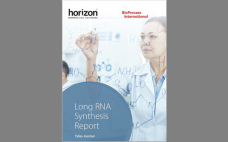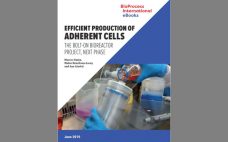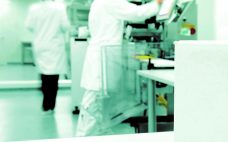Drug Substance Scenarios Given the complexity of the biopharmaceutical industry and the increasing diversity of products and companies, it is clear that there will be no “one size fits all” solution to biomanufacturing. Instead, we see a range of biomanufacturing scenarios playing out over the next 10 years. Five high-level scenarios were selected for drug substance manufacturing and two for drug product to cover the full spectrum of process and facility types. Each facility type is associated with a representative…
2019
A Shift of Mindset: How Single-Use Systems Influence Bioprocess Engineering and Project Execution
In past decades, the focus in bioprocess engineering was on traditional stainless steel project management, which is highly dependent on established project schedules. Many milestones, tasks, and deliverables during basic and detailed design and execution were implemented in the same tried and tested way by engineering, suppliers, and biopharmaceutical companies. Making decisions was complicated by alignment with long lead items. With the introduction of single-use (SU) technologies, the transition in execution and optimization of project management only just has been…
Long RNA Synthesis Report
Long single-stranded RNA oligonucleotides are increasingly necessary for a variety of genomic pathway research and drug discovery studies. However synthesizing and purifying long RNAs can pose unique challenges due to their sequence composition, secondary structure, and applied modifications. Here we explore how Horizon Discovery is leveraging Dharmacon’s 20+ years of RNA synthesis experience to solve the challenges of long RNA oligo synthesis to address unmet research needs.
eBook: Efficient Production of Adherent Cells – The Bolt-On Bioreactor Project, Next Phase
Some years ago, The Bolt-on Bioreactor (BoB) project was launched with an objective of bringing to the market an efficient bioreactor for culturing adherent cells. The BoB team identified four challenges that needed be addressed to succeed: volumetric productivity, process automation, containment and sterility, and process economics. BPI published findings related to those challenges and proposals of the BoB team to solve them in a four-article series in 2015. Here, the author offers an update on developments in The Bolt-on…
Transform Cell Expansion: Expand Outside the Hood
This webcast features: Charles Meadows, Head of Product Management, Smart Consumables, Sartorius-Stedim Biotech Cell Culture expansion from vial to seed bioreactor is done by passaging culture through successively larger Erlenmeyer shake flasks. Sampling, media feed, inoculation and transfers are done non-aseptically by unscrewing the cap in a biosafety cabinet (BSC). Contaminated expansions due to non-aseptic technique are abandoned costing time and materials. Sartorius leveraged novel bottle closure manufacturing technology to create MYCAP® CCX. MYCAP® CCX combines tubing for aseptic fluid…
June 2019 – From the Editor
Often we are pleasantly surprised at thematic connections that fall within an issue or come between an issue and its supplements — sometimes planned, sometimes a matter of happy coincidence. Setting an issue theme of continuous processing with a featured report on large-scale capacity strategies inevitably created some overlap. At this stage of maturation in its brief history, the biopharmaceutical industry offers myriad choices for facility design, process development, manufacturing paradigms, and partnering arrangements. With many successful examples to choose…
Good Manufacturing Practice in China: Equipment Strategy and Quality Management to Compete with the West
Although the concept of good manufacturing practice (GMP) was created about half a century ago in the United States, the history of GMP biomanufacturing is relatively short in China, with the first version of GMP rules issued by the Ministry of Health in 1998. In 2010, the ministry issued its fourth version of China’s GMP rules, which came into effect in March of 2011 (1). According to a recent report from BioPlan Associates, the 2010 version raised the standards to…
The Role of Single-Use Polymeric Solutions in Enabling Cell and Gene Therapy Production – Part 3: Best Practices for Supplier Selection, Qualification, and Validation to Ensure Supply Chain Security
Bio-Process Systems Alliance (BPSA) was formed in 2005 as an industry-led international industry association dedicated to encouraging and accelerating the adoption of single-use manufacturing technologies used in the production of biopharmaceuticals and vaccines. Corporate members include plastic equipment suppliers, service providers, and users in the biopharmaceutical industry who share this mission. A key focus of BPSA’s core activities is to educate its members and others through sharing of information and development of best practice guides that help suppliers, users, and…
From Interest in Intensification to a Factory of the Future
Much has been published on improvements and advances in many individual technologies for biomanufacturing. If you take a comprehensive look at the field, however, you find overlap, muddling, and even contradiction about which particular processes or aspects of technological development should be designated properly as process intensification. Although the industry is addressing such distinct goals as improved manufacturing yield, product quality, and cost-effectiveness, the names of initiatives commonly applied to accomplish those goals overlap at best. Such ambiguity and lack…
An Integrated Bioprocess for Antibodies: From Harvest to Purified Bulk in Six Hours
Antibody production platform processes have been widely adopted in biomanufacturing, but many unit operations are not suitable for integration and automation. Here we describe the work of integrating unit operations by transforming a column operation to a more robust cassette format. We have selected a biomolecule-friendly buffer (phosphate) to eliminate, or delay, the performance of a circulating tangential flow ultrafiltration/diafiltration (UF/DF) operation, so the harvest-to-purified-bulk process can be integrated, resulting in a single, direct-flow operation, that reduces the batch process…









